While Hygiene refers to conditions and practices that help to maintain health and prevent the spread of diseases. Bathroom Hygiene, according to Wikipedia, deals with routine cleaning of (hand, food, drinking water) sites and surfaces (such as toilet seats and flush handles, door and tap handles, work surfaces, bath and basin surfaces) in the bathroom and toilet reduces the risk of spread of pathogens.
The infection risk from flush toilets is not high, provided they are properly maintained, although some splashing and aerosol formation can occur during flushing, particularly when someone has diarrhea. In case of using public toilets you can always use a Toilet Seat Sanitizer to spray on the seat before sitting on it. A toilet seat sanitizer helps to kill bacteria just as any other sanitizer which helps to protect from UTI. Pathogens can survive in the scum or scale left behind on baths, showers and wash basins after washing and bathing.
Shower Details
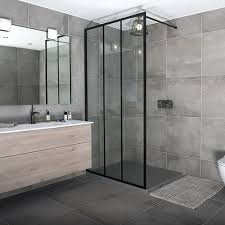 Water left stagnant in the pipes of showers can be contaminated with pathogens that become airborne when the shower is turned on. If a shower has not been used for some time, it should be left to run at a hot temperature for a few minutes before use.
Water left stagnant in the pipes of showers can be contaminated with pathogens that become airborne when the shower is turned on. If a shower has not been used for some time, it should be left to run at a hot temperature for a few minutes before use.
Thorough cleaning is important in preventing the spread of fungal infections. Molds can live on wall and floor tiles and on shower curtains. Mold can be responsible for infections, cause allergic responses, deteriorate/damage surfaces and cause unpleasant odors. Primary sites of fungal growth are inanimate surfaces, including carpets and soft furnishings. Air-borne fungi are usually associated with damp conditions, poor ventilation or closed air systems.
To Prevent Infection
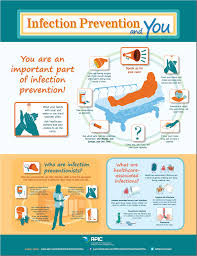 “Hygiene and Infection Control advice in the home” says, the bathroom is a high-risk area for infection. There are a lot of things in the bathroom that carry germs and if you touch these things the germs can get onto your hands and move to another area, such as the kitchen, or onto another person.
“Hygiene and Infection Control advice in the home” says, the bathroom is a high-risk area for infection. There are a lot of things in the bathroom that carry germs and if you touch these things the germs can get onto your hands and move to another area, such as the kitchen, or onto another person.
To prevent infection you should:
- First of all, always wash your hands after using the toilet or bathroom.
- Next, make sure you keep your bathroom clean.
- In the first place, use hot water and detergent for cleaning your bathroom.
- In addition, use separate cloths for cleaning the bathroom.
- Then, you should clean your sink first and your toilet last.
- For this purpose, clean the areas that you touch regularly, such as your toilet, flush and taps.
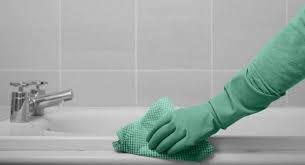
- In fact, clean your toilet bowl regularly with a limescale remover. You shouldn’t use bleach as it can stop good bacteria breaking down solids if you have a septic tank or bio-unit.
- Immediately, clean floors or other surfaces that have come into contact with feces or vomit.
- Get rid of as much of the feces from the surface as you can using paper or a disposable cloth.
- Clean surfaces with hot water and detergent using a fresh cloth or paper towel to get rid of dirt, then put household bleach onto the surface using a fresh cloth or paper towel to kill any germs.
- Wear disposable gloves if you come into contact with feces or body fluids and wash your hands after you’ve taken your gloves off.
- Never put bleach directly onto urine or vomit spills. You should clean them with hot water and detergent and then use a small amount of household bleach once you have cleaned the area.
Toilet Hygiene
 The importance of Toilet Hygiene – Leadership Newspaper, tells us that he toilet has a lot to do with personal hygiene and general health as it is a place that can not be avoided since it is essential to take a bath and visit the toilet often in a day, keeping it clean and free from anything that can endanger health is important.
The importance of Toilet Hygiene – Leadership Newspaper, tells us that he toilet has a lot to do with personal hygiene and general health as it is a place that can not be avoided since it is essential to take a bath and visit the toilet often in a day, keeping it clean and free from anything that can endanger health is important.
The toilet, like the bathroom, is a humid area of the house, due to the amount of water in the cistern. A toilet is also a perfect place for germs and bacteria to breed. Bacteria like E-coli, Salmonella and much more can mostly be found in the toilet bowl. These bacteria are also found on the toilet seat, the floor, the flush and the door handle. Bacteria in the toilet absorb organic waste and release gases which is the reason why we get a foul odor in the toilets. Hence toilet hygiene is very important.
In Closing
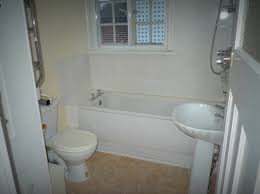 Just remember, we are all aware of the line which says that cleanliness is next to GODLINESS. We need to remind ourselves toilet cleanliness is very important for everyone. It is the place where all the germs and bacteria start their attacks on the human body. That is the reason why the toilets need to be sanitized each and everyday.
Just remember, we are all aware of the line which says that cleanliness is next to GODLINESS. We need to remind ourselves toilet cleanliness is very important for everyone. It is the place where all the germs and bacteria start their attacks on the human body. That is the reason why the toilets need to be sanitized each and everyday.
A high standard of cleanliness should be maintained in Toilet bowls, seats, urinals, washbowls, and other fixtures should be cleaned properly. For this reason, it is of the utmost importance that adequate ventilation be maintained at all times. Room temperature should be kept as low as possible in summer, and not over 65 in winter. A warm room allows growth of bacteria, which is the source of many odors. Under normal conditions, daily cleaning is satisfactory.
Wash bowl inside and out with all-purpose synthetic detergent solution. If water is hard and deposits are difficult to remove, use one tablespoon of trisodium phosphate to one gallon of water. Care should be taken in the use of trisodium phosphate. It attacks porcelain or vitreous china.
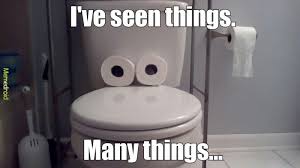 Remove stains with a damp cloth and a detergent solution. Do not use toilet bowl cleaner, acids, or stronger alkalies because they damage surface glaze. Work toilet mop as far as possible into trap. Thoroughly wash rounded inside rim of bowl. Inspect rim with hand mirror to insure complete removal of deposits. Wash seat with all-purpose synthetic detergent solution. Wipe outside of bowl and seat with clean, damp cloth. Flush toilet to rinse inside of bowl. Wipe tank and cover with clean damp cloth. If toilet bowls are properly cleaned daily with detergents, stronger cleaners will not be necessary.
Remove stains with a damp cloth and a detergent solution. Do not use toilet bowl cleaner, acids, or stronger alkalies because they damage surface glaze. Work toilet mop as far as possible into trap. Thoroughly wash rounded inside rim of bowl. Inspect rim with hand mirror to insure complete removal of deposits. Wash seat with all-purpose synthetic detergent solution. Wipe outside of bowl and seat with clean, damp cloth. Flush toilet to rinse inside of bowl. Wipe tank and cover with clean damp cloth. If toilet bowls are properly cleaned daily with detergents, stronger cleaners will not be necessary.
I hope that you have really enjoyed this post,
Please Leave All Comments in the Comment Box Below ↓
- FULL Size, Annabel Upholstered Tufted Button Vinyl Headboard, Black

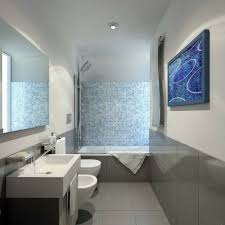












Thanks for sharing. This is very important info now especially during this epidemic still going on. I am always avoiding using the public toilet if I can. We should keep our house clean, the living room where the kids will roam around, the bathroom too especially if the toilet is inside the bathroom. Many of us are unaware that we should always flush the toilet with the cover close.
Many people don’t know that the unhygienic environment can spread fungal infections. Good to let us know that molds can live in the wet room, like on the curtains, tiles, and corners of the walls. Mold can react to allergy skin conditions, sensitive nose, and can cause us unhealthy too. Good sharing thanks, Jerry.
Thank you for reading and commenting.
It is my pleasure to bring content of this caliber to the attention of those who are interested.
Enjoy Your Journey and Stay Blessed My Friend!
This is a very relevant topic in the current climate and I liked the detail and your intructive points of this article. The things I was missing in this article was your recommendations of cleaning products to use, what equipment should you use to clean your bathroom well. how often should you replace the cloths you use? how often should you be cleaning your bathroom. I think you just need to give a more family orientated practical view to this article.
Thank you for reading and commenting on this post.
Please continue to check back as I am continuously making updates and creating additional content for this website.
Thank you again for reading and commenting on this article.
Blessings To You My Friend!